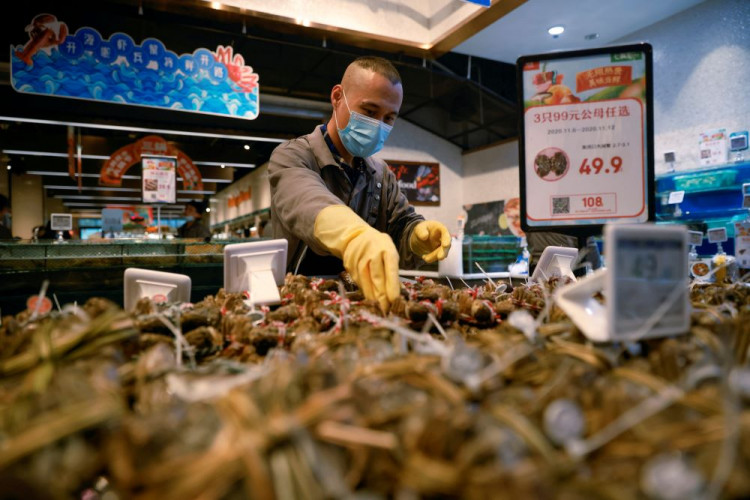China's annual inflation rate jumped to 0.9% year over year in April from 0.4% in March, according to data from the National Bureau of Statistics Tuesday. A consensus view by economists had pegged inflation at 1%.
The rate was the highest reading since September and was a result of a faster increase in cost of nonfood goods - up 1.3% in April compared with 0.7% in March, the bureau said.
Transport and communication costs also saw a big month on month rise - 4.9% compared with 2.7%, the data said.
Meanwhile, food prices dropped 0.7% with prices of pork declining faster - down 21.4% in April compared with an 18.4% fall a month earlier, the bureau reported.
On a monthly basis, consumer prices fell 0.3% in April after a 0.5% drop in March. source:
Meanwhile, producer price inflation was the strongest since October 2017 in April. "Upstream price pressures remained significant due to supply constraints," Capital Economics said Tuesday. It said this contributed to the consumer price increase.
On-year producer price inflation rose to 6.8% in April compared with 4.4% in March. "This mostly reflects a lower base for comparison due to the global downturn a year ago," Capital Economics senior China economist Julian Evans-Pritchard said.
"The key driver remains the rally in global commodity prices - the raw materials component of the PPI is up 15.2% on year. But at the same time, the data also points to unusually strong price pressures for some finished goods. For example, output prices of durable consumer goods are rising at the fastest pace on record.
"These upstream price pressures are starting to feed through to consumer price inflation. Admittedly, the latest pick up was partly the result of a jump in fuel price inflation from 11.5% on year to 19.4% which was entirely due to base effects."
"Supply-side disruptions may persist for a while longer, keeping producer price inflation elevated in the near term. Alongside a tightening labor market, this looks set to drive a further rebound in consumer price inflation - most likely to around 2% by the end of the third quarter," he said.
"Price surges have spread to midstream products and will continue to affect midstream and downstream merchandise, driving an increase in costs for the whole society," said Hu Yanhong, an analyst at Yingda Securities. "It could become an obstacle to the economic advances."






